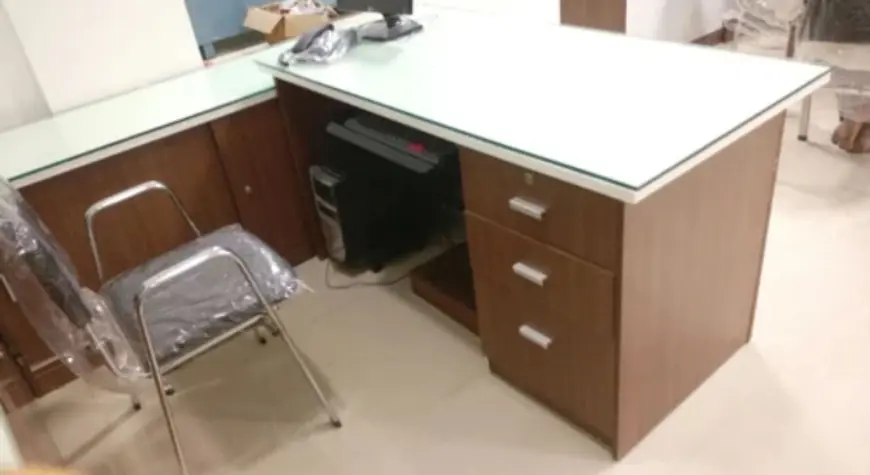Choosing the Right Executive Table - Buying Guides
Discover essential buying guides for selecting the perfect executive table. Enhance your workspace with style and functionality tailored to your needs.

When outfitting an office, the executive table plays a crucial role. Not only does it serve as the focal point of the workspace, but it also reflects the professional stature of the individual occupying it. Choosing the right executive table for an office requires consideration of several key factors, including functionality, style, durability, and size. In this buying guide, we will explore what you need to know to make an informed decision about purchasing the perfect executive table for office.
1. Understand Your Space and Size Requirements
Before you start shopping for an executive table, it’s essential to evaluate the space available in your office. The size of the table should complement the size of the room and allow for easy movement. A large executive table can overwhelm a small office, while a smaller one may not offer the required workspace for your tasks.
Take measurements of the room where you plan to place the table. Consider not just the length and width of the desk, but also the height and how much clearance you need for comfortable seating and legroom. Generally, an executive table is around 60-72 inches long and 30-36 inches deep. However, you can choose a more customized option based on your preferences and office space.
2. Material Matters: Choosing the Right Build
Executive tables are made from various materials, each with distinct benefits. The material you select impacts not only the aesthetics of your office but also the durability and maintenance needs of the desk.
-
Wood: Wood is a traditional and popular material for executive tables. Whether solid hardwood or wood veneer, wood adds an elegant, timeless touch to the office. A solid wood executive table is highly durable and can last for years with proper care. However, it can be expensive compared to other materials.
-
Metal: For a modern, sleek look, you may consider metal executive tables. They are often paired with wood or glass elements and offer a contemporary, professional appearance. Metal desks are incredibly sturdy and can handle heavy use in a busy office environment.
-
Glass: For a more open and airy feeling in the office, glass executive tables are a great option. They are visually appealing and can make a space look larger. However, glass can be more fragile and may require more frequent cleaning.
-
Laminate: Laminate executive tables are more affordable than solid wood or metal. While they may not have the same high-end feel, they offer a wide variety of designs and colors and are easy to maintain.
3. Style and Design
The executive table you choose should reflect your personal style and the overall theme of your office. Whether you prefer a traditional, modern, or industrial look, there’s an executive table that will suit your taste.
-
Traditional Executive Tables: These are often made of dark wood and feature intricate details like carvings, elegant paneling, and brass or gold hardware. These tables exude luxury and sophistication and are perfect for creating a formal, classic atmosphere.
-
Modern Executive Tables: If you prefer a clean, minimalist aesthetic, modern executive tables are sleek and streamlined. Often featuring metal or glass elements, these tables focus on functionality and simplicity, making them ideal for a contemporary office.
-
Contemporary Executive Tables: Combining elements of traditional and modern designs, contemporary tables often use a mix of materials such as wood, metal, and glass. They offer versatility in terms of style and can complement various office décor styles.
4. Functionality and Features
The right executive table is not just about looks—it should also be functional. Look for a table that can accommodate your daily needs and provide efficient storage options. Some of the important features to consider include:
-
Drawers and Storage: Executive tables often come with built-in drawers or filing cabinets, which are great for organizing important documents and office supplies. Think about the type and amount of storage you require before making your decision.
-
Cable Management: If you use several electronic devices, such as a computer, printer, and phone, cable management features like hidden ports or grommets will help you keep wires neatly organized and out of sight.
-
Ergonomics: Comfort is key when choosing an executive table. Make sure the table allows for an ergonomic setup that suits your posture and promotes productivity. The height of the table should allow for proper legroom, and the layout should ensure easy access to your tools and devices.
5. Budget Considerations
When shopping for an executive table for your office, it’s important to have a clear budget in mind. Executive tables come in a wide price range, from budget-friendly options to high-end luxury models. Consider your office’s needs and how much you are willing to invest in your workspace. While you don’t have to splurge on the most expensive model, investing in a high-quality executive table can pay off in terms of durability and aesthetic appeal.
6. Durability and Maintenance
Your executive table should be durable enough to handle everyday use. Look for high-quality construction, solid joints, and sturdy materials. Remember, maintenance varies depending on the materials used. Wood may require polishing, while metal and laminate can be cleaned easily with a damp cloth.
7. Conclusion
The right executive table can transform your office into a highly functional, stylish, and professional space. Whether you opt for a traditional wooden desk, a modern metal design, or a contemporary mix of materials, your choice should reflect both your style and practical needs. By considering factors like size, material, functionality, and design, you can find the perfect executive table for your office that enhances your workspace and boosts productivity.












